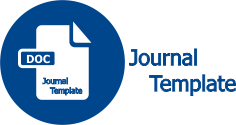Pengembangan E-Modul Berbasis Inkuiri Terbimbing untuk Meningkatkan Kemandirian Belajar dan Hasil Belajar Peserta Didik pada Materi Koloid
(1) Universitas Negeri Makassar
(2) Universitas Negeri Makassar
(3) Universitas Negeri Makassar
(*) Corresponding Author
DOI: https://doi.org/10.26858/cer.v5i2.32728
Abstract
Keywords
Full Text:
PDFReferences
Anggraini, D. (2019). Penerapan Model Pembelajaran Inkuiri Terbimbing Terhadap Prestasi Belajar Dan Kemandirian Belajar Peserta Didik. (Thesis). Yogyakarta: Program Pascasarjana, Universitas Negeri Yogyakarta.
Anglada, D. (2007). An Intoduction to Instructional Design: Utilitizing a Basic Design Model. Diterima melalui: http://www.paca.sdu/ctlt/newsletter.
Arsyad, A. (2011). Media Pembelajaran. Jakarta: PT Rajawali Press.
Bake, M. dan Kenneth, I.O. (2013). A Study on The Effects of Guided Inquiry Teaching Method on Students Achievement in Logic. International Reseaarcher, 2(1), 134-140.
Brickman, C. G., Amstrong, N. dan Hallar, B. (2009). Effect of Inquiry-Based Learning on Student’s Acievment of Acid and Based Concept and Attitude Toward Guided Inquiry Instruction. Scientific Research and Essay. 4(10), 1038-1046.
BSNP. (2006). Permendiknas RI No. 22 Tahun 2006 tentang standar isi untuk Satuan Pendidikan Dasar dan Menengah. Jakarta.
Cahyo, A. (2013). Panduan Aplikasi Teori Belajar. Jakarta. PT. DIVA Press.
Danial, M. & Yunus, M. (2019). Critical Thinking Skills and Student Learning Independence of Chemistry Department Undergraduate Programs in Lectures of Chemistry Education Seminar Through Critical Analysis Techniques, Journal of Physics: Conference Series, 1317, 012151.
Departemen Pendidikan Nasional. (2008). Panduan Pengembangan Bahan Ajar. Jakarta: Depdiknas.
Fajriani, D. (2015). Pengembangan Modul Berbasis Inquiry Materi Koloid di Kelas XI IPA MAN SALATIGA. (Skripsi). Program Studi Pendidikan Kimia Jurusan Pendidikan Matematika dan Ilmu Pengetahuan alam. Universitas Sriwijaya Inderalaya.
Fakhrurrazi. (2018). “Hakikat Pembelajaran Yang Efektif”. Jurnal At Tafkir, XI(01), 85-99.
Hake, R.R. (1999). Analyzing Change/Gain Score Department of Physics, Fundamental Characteristics of Atoms and Moleculas. Journal of Research In Science Teaching, 29(6), 611-628.
Herawati. (2018). Pengembangan Modul Elektronik (E-Modul) Interaktif Pada Mata Pelajaran Kimia Kelas XI SMA. Jurnal Inovasi Teknologi Pendidikan, 5(2), 180-191.
Hiemstra. (1994). Self-Directed Learning. In T. Husen & T.N Postlethwaite (Eds). The International Encyclopedia of Education (Second Edition). Oxford: Pergamon Press.
Kai-Wu, H, dan Chou-En, H. (2008). Developing ‘Sixth Graders’ Inquiry Skills to Construct Explanations in Inquiry-based Learning Environments.Developing Inquiry Skills to Construct Explanations. Taiwan: National Taiwan Normal University.
Rochmad. (2012). Desain Model Pengembangan Perangkat Pembelajaran Matematika. Jurnal Kreano, 3(1), 68.
Safitri, A. (2015). Pengembangan Modul Kimia SMA Berbasis Inkuiri Terbimbing pada Materi Larutan Penyangga. (Skripsi). Jurusan Kimia Fakultas Matematika dan Ilmu Pengetahuan Alam Universitas Negeri Semarang.
Song & Hill, (2007). A cconceptual Model for Understanding Self-Directed Learning in Online Environments. Journal of interactive online learning, 6(1), university of Georgia.
Tiring, S. N. D. (2015). Pengembangan Modul Kimia Berbasis Inkuiri Terbimbing Pada Materi Identifikasi Gugus Fungsi Kelas X Smk Kimia Industri. Jurnal Inkuiri, UNS.
Article Metrics
Abstract view : 452 times | PDF view : 84 timesRefbacks
- There are currently no refbacks.
Jurnal dipublikasikan oleh: Program Studi Pendidikan Kimia
Program Pascasarjana Universitas Negeri Makassar
Alamat JL. Bonto Langkasa Gunung Sari Makassar, 90222
Kampus PPs UNM Makassar Gedung AD ruang 406 Lt 4, Indonesia.Phone 082393643737/085145825311/085242228678
CER UNM Indexed by:

Chemistry Education Review (CER) is licensed under a Creative Commons Attribution-NonCommercial 4.0 International License.










